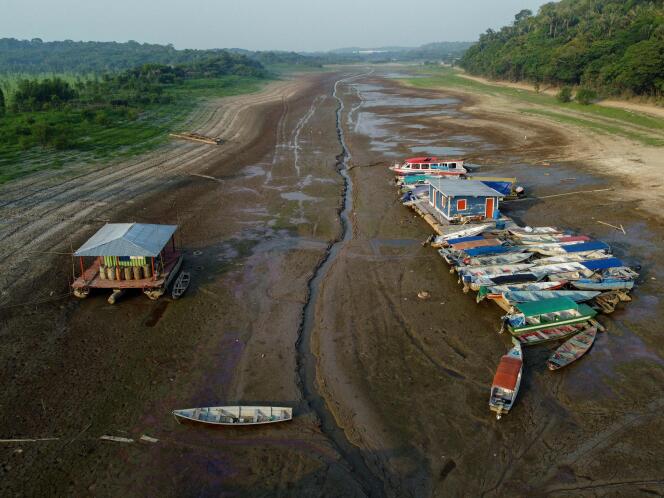


Benedito Clemente de Souza can't believe it. The 64-year-old seasoned fisherman and respected leader of the community of Jurucua, in the heart of the Brazilian Amazon, has ventured over the past few days to the banks of the Rio Purus, a powerful tributary of the Amazon, which flows opposite his village. To his astonishment, instead of being the usual 3 meters deep at this time of year, the river is barely knee-deep.
"In decades, I've never seen the river in such a state," he said over the phone. Located in the Médio Purus reserve, two hours by boat from the nearest town, the community of Jurucua now fears being literally cut off from the world. "Goods boats can no longer get through. Fishermen can't get to their fishing grounds. Everyone here is very worried," he said.
The village is just one of the many victims of the terrible drought currently affecting the Amazon region. Extreme heat has combined with what many experts believe to be an unprecedented lack of rainfall. The Amazon, Purus, Jurua, Madeira, Acre... all the forest's major rivers are at record lows. The rio Negro, on the banks of which the city of Manaus is located, is just one example. On Tuesday, October 10, it was 14 meters deep: five meters less than it was in 2022.
The situation is even more worrying with the tributaries. Many of them have been reduced to muddy ponds or sandbanks, between which meander thin trickles of dark water. Biodiversity is the first to suffer. In several places, crocodiles and thousands of fish have been found dead. On Lake Tefé, rising temperatures have reportedly led to the death of at least 141 freshwater dolphins.
The consequences are also human, particularly in the vast state of Amazonas (three times the size of France) where Jurucua and Tefé are located. Almost the entire state has been placed on alert, with up to 500,000 inhabitants already affected by the drought. Navigation has been disrupted on 90% of the river lines, which are essential for transporting goods and people. Twenty thousand children could find themselves without school.
In the jungle, many villages are deprived of medicine, fuel, food, drinking water and income. "The damage is enormous. Production and trade require constant access to travel by pirogue," said Givanildo Freitas da Silva, leader of the local association of small producers in the Medio Jurua reserve in Amazonas, where açai palm and andiroba nuts are grown. He fears that "years of investment will be wiped out."
You have 43.94% of this article left to read. The rest is for subscribers only.
